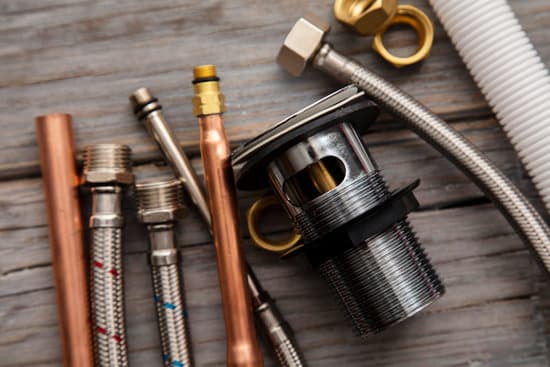Why is green home improvement important in today’s world? As the push for sustainable living practices continues to grow, the concept of green home improvement has gained significant traction. This approach focuses on making eco-friendly choices in building, renovating, and maintaining homes to minimize environmental impact and promote a healthier lifestyle. In this article, we will delve into the importance of incorporating green practices into home improvement projects and how it can benefit both homeowners and the planet.
Traditional home improvement methods often involve practices that harm the environment, such as using non-recyclable materials, consuming excess energy, and generating waste. Green home improvement offers a sustainable alternative by using eco-friendly materials, reducing energy consumption, and minimizing waste production. By embracing green techniques, homeowners can play a crucial role in mitigating environmental degradation and combating climate change.
One of the key advantages of green home improvement is its focus on energy efficiency. By opting for energy-efficient appliances, proper insulation, and LED lighting solutions, homeowners can significantly reduce their energy consumption and utility costs. Additionally, green practices like improving indoor air quality through ventilation systems and using eco-friendly paints can create a healthier living environment for residents.
Water conservation efforts through the use of water-saving fixtures and landscaping practices also contribute to sustainable living. Ultimately, investing in green home improvement not only benefits the environment but also enhances the overall quality of life for homeowners.
Environmental Impact
Traditional home improvement practices often involve the use of materials and methods that have a detrimental impact on the environment. For instance, the production and transportation of non-sustainable materials like PVC, plastic, and non-recycled wood contribute to carbon emissions and pollution.
Additionally, traditional construction practices often result in the generation of construction waste that ends up in landfills, further adding to environmental degradation. This is why green home improvement is important as it aims to minimize these harmful effects on the planet.
Furthermore, traditional home improvement practices often rely heavily on energy-intensive processes that contribute to increased greenhouse gas emissions. The installation of inefficient appliances, poor insulation techniques, and outdated lighting fixtures can lead to higher energy consumption and utility costs, as well as unnecessary strain on natural resources.
By shifting towards green home improvement solutions that prioritize energy efficiency through the use of sustainable materials and technologies, homeowners can not only reduce their environmental footprint but also save money in the long run.
In addition to reducing energy consumption and minimizing waste generation, green home improvement also focuses on improving indoor air quality. Many conventional building materials contain harmful chemicals and volatile organic compounds (VOCs) that can negatively impact human health.
By choosing eco-friendly materials with low or no VOC emissions, implementing proper ventilation systems, and opting for natural cleaning products, homeowners can create a healthier living environment for themselves and their families. This holistic approach to sustainability is another reason why green home improvement is important in today’s world.
Benefits of Green Home Improvement
Green home improvement is not only a trend but also a necessity in today’s world. The increasing awareness of environmental issues and the need for sustainable living has made green home improvement an important consideration for homeowners. But why is green home improvement important?
One of the key reasons is its significant impact on reducing carbon emissions and minimizing environmental degradation. Traditional home improvement practices often involve the use of non-renewable resources, harsh chemicals, and wasteful habits that contribute to pollution and resource depletion. By choosing eco-friendly alternatives and sustainable solutions, individuals can lessen their carbon footprint and help protect the planet for future generations.
When considering green home improvement, one cannot overlook the various benefits it brings to both the environment and homeowners themselves. Opting for energy-efficient appliances, insulation, and lighting not only reduces energy consumption but also leads to substantial savings on utility costs in the long run. In fact, studies have shown that green homes have higher property values and lower operating costs compared to traditional homes.
Additionally, green home improvements can enhance indoor air quality by minimizing exposure to harmful chemicals and toxins commonly found in conventional building materials. This promotes a healthier living environment for occupants, especially those with allergies or respiratory conditions.
Another crucial aspect of green home improvement is water conservation. By incorporating water-saving fixtures and implementing sustainable landscaping practices, homeowners can significantly reduce their water usage and contribute to preserving this precious resource. This not only benefits the environment but also helps save money on water bills over time.
Furthermore, using eco-friendly materials in construction and renovation projects is essential for minimizing waste generation and reducing pollution levels. Sustainable materials are often non-toxic, durable, and recyclable, ensuring a greener approach to building that prioritizes longevity and environmental responsibility.
| Key Benefits of Green Home Improvement | Relevance |
|---|---|
| Reduced carbon emissions | Protecting the environment |
| Lower energy consumption | Cost savings for homeowners |
| Improved indoor air quality | Healthier living environment |
Energy Efficiency
Green home improvement is important for a variety of reasons, with energy efficiency being a major aspect. By opting for energy-efficient appliances, insulation, and lighting in your home improvement projects, you can significantly reduce your energy consumption and utility costs. Energy-efficient appliances are designed to use less electricity or water compared to standard models, leading to lower energy bills and a decreased environmental impact.
According to the U.S. Department of Energy, heating and cooling account for about 48% of the energy use in a typical U.S. home, making proper insulation crucial for reducing energy consumption. By investing in high-quality insulation during your home improvement projects, you can better regulate indoor temperatures, reduce energy waste, and lower heating and cooling expenses.
Additionally, improved insulation can enhance the overall comfort of your living space by minimizing drafts and maintaining consistent temperatures throughout your home.
Another key component of green home improvement is upgrading to energy-efficient lighting solutions. LED bulbs, for example, consume significantly less energy than traditional incandescent bulbs and have a much longer lifespan. By replacing outdated lighting fixtures with LED alternatives, you can lower your electricity usage and decrease the frequency of bulb replacements. This not only saves you money in the long run but also reduces the demand for new materials and decreases greenhouse gas emissions associated with electricity generation.
| Energy-Efficient Appliances | LED Lighting |
|---|---|
| Reduce electricity or water usage | Consumes less energy |
| Lower energy bills | Longer lifespan |
| Decreased environmental impact | Saves money in the long run |
Indoor Air Quality
To understand the importance of enhancing indoor air quality through green home improvements, here are some key benefits:
- Reduced exposure to toxins: Green home improvements involve using non-toxic materials and products that do not emit harmful substances into the air. This helps reduce the risk of respiratory issues, allergies, and other health problems associated with poor indoor air quality.
- Improved ventilation: Green home improvements often focus on improving ventilation systems to allow fresh air circulation throughout the house. Proper ventilation helps remove indoor pollutants and maintain a healthy atmosphere indoors.
- Promotion of overall well-being: Breathing clean air is essential for maintaining good health and well-being. By investing in green home improvements that prioritize indoor air quality, homeowners can create a more comfortable and healthy living environment for themselves and their families.
Considering these benefits, it becomes clear why green home improvement important when it comes to enhancing indoor air quality and promoting a healthier lifestyle for homeowners. Making conscious choices to prioritize eco-friendly and sustainable solutions in home renovation projects can have a significant impact on both environmental sustainability and personal health.
Water Conservation
One of the primary reasons why water conservation is important in green home improvement is its direct link to environmental sustainability. Traditional water-intensive practices can deplete natural resources, harm aquatic ecosystems, and contribute to energy consumption for water treatment and distribution.
By installing low-flow fixtures such as faucets, showerheads, and toilets, homeowners can significantly reduce their overall water usage without compromising comfort or functionality. Additionally, incorporating drought-resistant plants and efficient irrigation systems into landscaping designs can further minimize outdoor water consumption while maintaining a visually appealing yard.
Furthermore, embracing water conservation measures as part of green home improvement not only benefits the environment but also improves the overall quality of life for residents. By ensuring a sustainable supply of clean water for future generations, individuals are taking proactive steps towards creating a healthier and more resilient community.
Additionally, reduced water usage translates to lower utility bills, offering long-term savings that can offset initial investments in eco-friendly upgrades. Ultimately, by prioritizing water conservation in green home improvement projects, homeowners can make a meaningful contribution to environmental preservation while enjoying numerous practical and financial benefits.
Eco-Friendly Materials
When it comes to green home improvement, one of the key considerations is the use of eco-friendly materials in construction and renovation projects. Sustainable and non-toxic materials not only help reduce the environmental impact of your home improvement efforts but also contribute to a healthier living environment for you and your family. By opting for these types of materials, homeowners can make a positive difference in both their homes and the planet.
Benefits of Sustainable Materials
Choosing sustainable materials for your home improvement projects comes with a host of benefits. These materials are typically sourced from renewable resources, thereby reducing the overall carbon footprint associated with their production and transport. Additionally, many eco-friendly materials are durable and long-lasting, which means less need for frequent replacements or repairs. From bamboo flooring to recycled glass countertops, there is a wide range of sustainable options available for every aspect of your home.
Non-Toxic Alternatives
In addition to being sustainable, eco-friendly materials are also non-toxic, meaning they do not emit harmful chemicals or volatile organic compounds (VOCs) into your indoor air. This can significantly improve indoor air quality and create a healthier living space for you and your loved ones.
From paints to insulation to furniture, there are plenty of non-toxic alternatives that can be used in home improvement projects without compromising on style or functionality. Making the switch to these safer options is not only beneficial for your health but also reduces the overall environmental impact of your home.
Financial Incentives
When considering home improvement projects, it is essential to think beyond just the immediate aesthetic and functional benefits. Making environmentally conscious decisions can have a significant impact on the planet and your wallet. This section will delve into the financial incentives associated with green home improvements, shedding light on the various ways in which eco-friendly choices can lead to savings, tax credits, and rebates.
Tax Credits
One of the primary reasons why green home improvement is important is the potential for tax credits. The government offers incentives for homeowners who make energy-efficient upgrades to their properties. These credits can help offset the initial costs of installing solar panels, high-efficiency HVAC systems, or insulated windows. By taking advantage of these tax breaks, homeowners not only reduce their environmental footprint but also save money in the long run.
Rebates
In addition to tax credits, many utility companies and local governments offer rebates for green home improvements. These rebates often apply to energy-efficient appliances, water-saving fixtures, and other environmentally friendly upgrades. By researching available rebate programs in your area and incorporating eligible products into your renovation plans, you can further reduce the overall cost of your project while contributing to a more sustainable living environment.
Savings
Beyond tax credits and rebates, opting for green home improvements can lead to significant savings on utility bills. Energy-efficient appliances, improved insulation, and efficient lighting solutions can all help lower energy consumption and decrease monthly expenses.
Over time, these savings can add up, making green home improvements not only beneficial for the environment but also financially rewarding for homeowners. By investing in sustainable upgrades now, homeowners can enjoy a more cost-effective and eco-friendly lifestyle in the years to come.
Conclusion
In conclusion, it is evident that green home improvement is not just a passing trend but a crucial step towards creating a sustainable and environmentally-friendly living space. The concept of green home improvement goes beyond mere aesthetics and delves into the realm of responsible consumption and eco-conscious choices.
By choosing to implement sustainable practices and eco-friendly solutions in our homes, we can significantly reduce our carbon footprint and contribute to the preservation of the planet for future generations.
One of the key reasons why green home improvement is important is its positive impact on the environment. Traditional home improvement practices often lead to increased consumption of resources, generation of waste, and pollution. By opting for green alternatives such as energy-efficient appliances, water-saving fixtures, and eco-friendly materials, we can minimize our negative impact on the environment and help mitigate climate change.
Furthermore, embracing green home improvement practices not only benefits the environment but also offers long-term advantages for homeowners. From reduced utility costs to improved indoor air quality and enhanced property value, investing in sustainable home improvements can lead to a healthier, more comfortable, and cost-effective living space.
Overall, by making conscious choices when it comes to renovating or building our homes, we can create spaces that are not only beautiful but also environmentally responsible and economically beneficial in the long run.
Frequently Asked Questions
What Are the Benefits of Green Remodeling?
Green remodeling offers a variety of benefits, including reduced energy consumption, lower utility bills, improved indoor air quality, and increased property value. By incorporating sustainable materials and energy-efficient features, homeowners can create a healthier living environment while reducing their carbon footprint.
Why Do We Need Green Homes?
The need for green homes is crucial in today’s world to address environmental challenges such as climate change and resource depletion. Green homes help reduce greenhouse gas emissions, conserve natural resources, and promote sustainable living practices. By building and living in green homes, individuals can contribute to a more sustainable future for generations to come.
How Important Is Home Improvement?
Home improvement plays a significant role in enhancing the comfort, functionality, and aesthetics of a home. It allows homeowners to personalize their living space according to their needs and preferences while increasing the property’s value. Regular home maintenance and improvements not only improve the quality of life but also ensure the long-term durability and efficiency of the home.

I’m thrilled to have you here as a part of the Remodeling Top community. This is where my journey as an architect and remodeling enthusiast intersects with your passion for transforming houses into dream homes.





